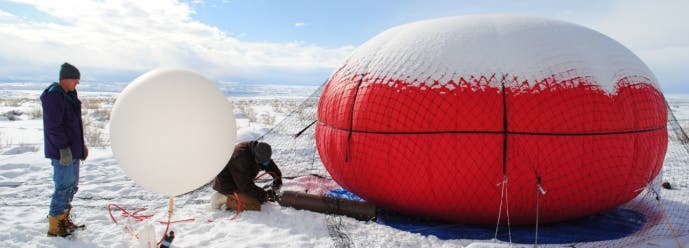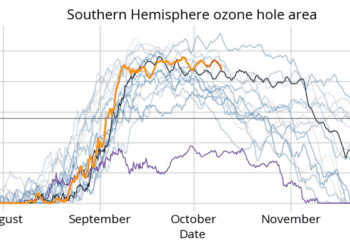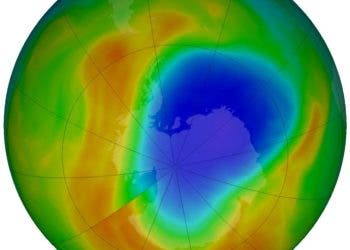Researchers at the National Oceanic & Atmospheric Administration have published findings that demonstrate what was speculated for a long time – oil and gas drilling in the vicinity of rural Utah is leaking important quantities of volatile chemicals, particularly high ozone levels, that are much higher than those typically found in busy cities. In fact, the pollution in the Uintah Basin is equivalent to that expelled by 100 million cars, even though the region is home to a scarce populace.
One of the largest oil- and gas-producing regions in the U.S., with more than 10,000 wells in operation, the Uintah Basin also has one of the largest polluting clouds in the world. Unusually high ozone levels have been in the area, and now researchers have found that the atmosphere is packed with benzene, a carcinogen, and compounds that are precursors of ozone, suggesting serious leaks are happening.
Over two winter months in 2012 and 2013, they used gas chromatography to measure VOC concentrations in ambient air at a site on the northern edge of the basin’s most extensive gas field. Air samples were taken using tethered baloons at a range of altitudes. Methane and other hydrocarbon volatile compounds known to be released in oil drilling were targeted. This includes benzene and toluene, which are directly toxic to humans.

Most importantly, ozone levels were measured using an ultraviolet absorption monitor. In the stratosphere, the sheet of ozone is imperious to life’s well being on Earth, blocking harmful ultraviolet rays. At low altitudes, close to the ground, ozone is one of the components of smog and is regarded as a pollutant. In urban centers, ozone forms after nitrogen oxide released by the fum exhaust expelled by cars reacts with light.
Needless to say, light alkane volatile compounds in the rural Utah atmosphere were measured at 10 to 100 times greater in concentration that those found in major U.S. cities. Snow cover drives this buildup: It prevents the ground from heating up, which slows surface air from mixing with colder, clean air from higher in the atmosphere. As a result, a layer of air about 50 to 100 m deep stagnates at the surface, accumulating pollutants. These periods coincided with ozone levels that exceeded EPA air quality standards.
Other popular gas and oil drilling sites are experiencing similar problems, Wyoming or the Colorado Front Range. As a result, gas and oil operators in Colorado were recently forced to tighten their leaks and capture 95% of their hydrocarbon emissions, including VOCs. Hopefully, similar regulations may become in place at the other sites.
The findings were reported in the journal Environmental Science & Technology.






